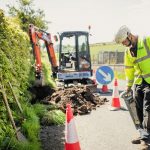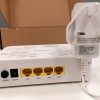1 in 7 UK Parents Claim Poor Home Broadband Hampers Education
A new uSwitch.com survey, which was conducted with 1,000 UK parents of children aged 5-18, has claimed that 15% of respondents (allegedly equivalent to around 1.2 million children) think slow home internet connection speeds are “negatively impacting their child’s education.”
On average, parents say their child does 3.9 hours of homework a week with around half of that (1.9 hours) requiring access to the internet. Perhaps unsurprisingly some 69% of parents also claimed that the internet was now “essential” to their child’s education. Admittedly those of us who were brought up in an education system that worked without the internet suffered few problems, although the current digital curriculum is rather different.
Elsewhere 36% reported that their child has experienced “internet problems” when attempting to complete their homework, although the survey doesn’t clarify whether this is related to the broadband connection or a faulty local network / computer. Curiously parents in towns and cities were found to be five times more likely (28%) to blame internet problems for potentially harming their child’s education than those in rural areas (5%).
Advertisement
The above find is interesting because 95%+ of the UK is already estimated to be within reach of a fixed “superfast broadband” (24Mbps+) network and a big chunk of that final 4-5% is often said to reflect rural areas. However this could also be an issue with how the survey was conducted and whether or not rural areas were given a proportionally correct representation.
Additional Highlights
* 24% of parents believe their child’s ability to do homework is being impacted by slower connection speeds at peak times (in the evening).
* 7% said their child doesn’t utilise online resources.
* 40% say their child uses YouTube, while 38% noted use of Wikipedia and 32% turn onto BBC Bitesize.
* 61% agreed that Laptop computers are the most common devices used for doing homework, with parents also reporting “educational” use of tablets (54%), mobile phones (37%), games consoles (11%) and smart TVs (11%).
We should point out that as the coverage of fixed line based superfast broadband slowly rises, from 95%+ today to 98% by 2020, then uptake may become part of the challenge. Despite the growing coverage it’s still the case that a little under half of all connections are conducted via slow ADSL lines.
The survey, which should be taken with the usual pinch of salt, doesn’t attempt to define what a good broadband speed would look like for educational purposes. In fairness this might be a bit more challenging than simply picking the Government’s definition of 10Mbps (1Mbps upload) for the future Universal Service Obligation (USO), not least since busy families often put much greater demands on the line (10Mbps could easily be strained). Other factors, such a data usage allowances, might also need to be considered.
In the meantime the coverage of superfast broadband is continuing to grow, albeit at a much slower pace than before (rural areas take longer to tackle), and the Government has also been pumping money into helping local authorities boost their “full fibre” connectivity to public sector sites, including schools (e.g. the Gigabit voucher scheme). Both Wales and Scotland also have similar on-going projects to extend coverage.
Advertisement
Mark is a professional technology writer, IT consultant and computer engineer from Dorset (England), he also founded ISPreview in 1999 and enjoys analysing the latest telecoms and broadband developments. Find me on X (Twitter), Mastodon, Facebook, BlueSky, Threads.net and Linkedin.
« Salmon Farmer Helps Bring Wireless Broadband to West Scotland
5G Mobile Innovation Network Goes Live to Oversee UK Trials »

















































Comments are closed